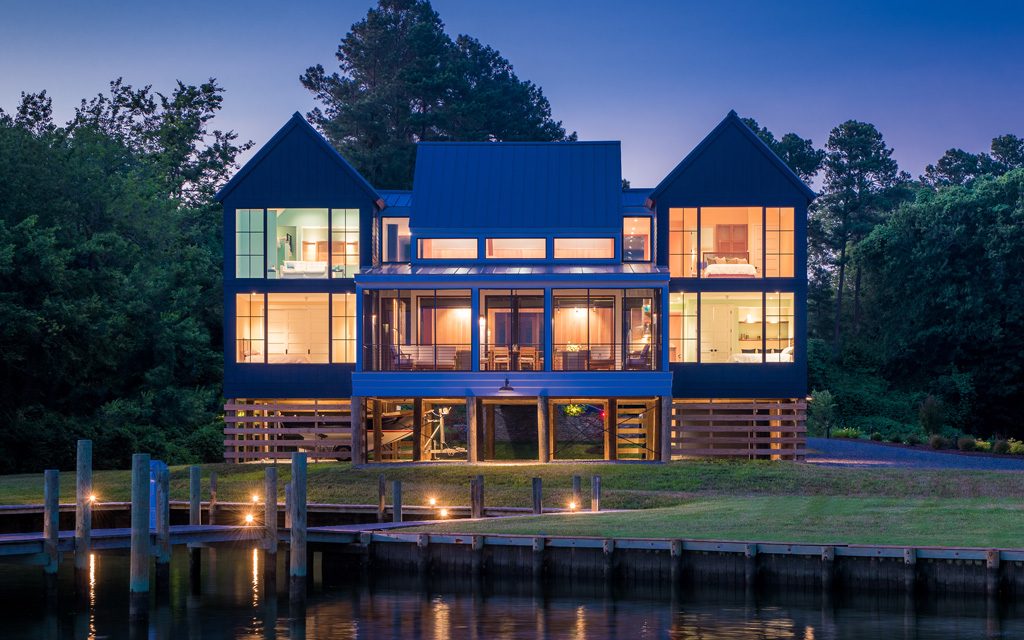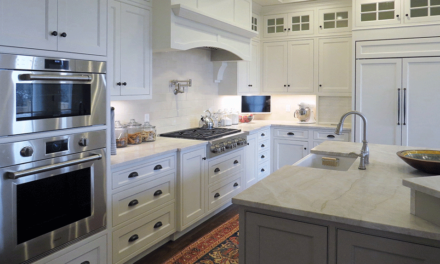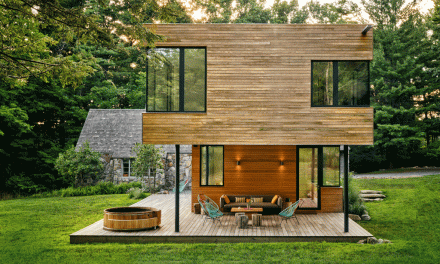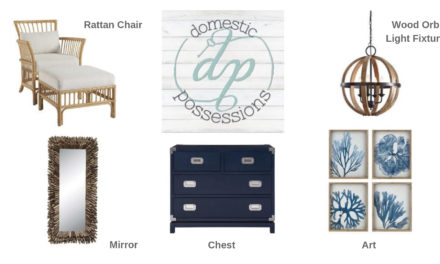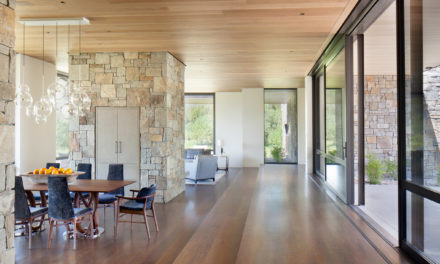A Modern Waterfront Home Takes Cues from the Past
Hey guys, welcome back to DESIGN Exploder – this is the place where we take a closer look at spaces and homes that we love and uncover some of the secrets behind the design!
Good residential designs integrate both the homeowner’s wishes and dreams while responding to what the site has to offer – things like views, sun, light, topography, water, vegetation, and the history of the region. Randall Kipp of Kipp Architecture in Irvington, Virginia, designed home on Carter’s Creek for what both the owners and the site called for. At the same time, he added his own special mix. The result – a modern waterfront home that engages with its site and references the past, while embracing the homeowner’s lifestyle of today.
The Challenges of Building a Waterfront Home
The homeowners were drawn to this unique site because of their love for the area and their passion for water activities, particularly sailing. Home sites near water present many opportunities, but often bring along with them added design challenges. For example, this home had to be raised on piers due to the proximity to the creek and the potential for flooding. The need to build on piers reminded Kipp of the history of the region. Carter’s Creek, and other surrounding areas along the Rappahannock River, were dotted with wharfs for bringing goods to the area. These wharfs would often include simple structures for storing the goods while waiting for delivery or loading.
Simple Massing
So, Kipp took a cue from these structures and designed this home with simple massing to reflect the past. The three “boxes” are arranged in a logical manner with the two flanking wings designated for bedrooms and their supporting rooms. In contrast, the middle, connecting block, is designed for spaces for gathering – kitchen and living area. The simple forms feel like they belong on the site, almost like they have been there for hundreds of years. And they fit in with the context of the region. This connection with the past, and familiarity of forms, helps to create a sense of comfort for us when we take in the composition as a whole.
This simple organization of spaces also allows our minds to relax. We intuitively know “where things are” and we can feel safe. More complex spaces require our brains to work harder to understand where threats might be lurking. This primal reaction to space is something we rarely consciously understand. When things just feel right, we feel better. Now, our brains are freed up to spend energy differently, like relaxing with a view, preparing dinner, or focusing on a conversation with a loved one.
A Procession from Land to Sea
The need for piers, which raise the home above potential flooding, created a disconnect from land. This is a very typical challenge for many homes built along the coast. However, Kipp took this challenge head on and designed a gentle procession from the car to the main living space. It starts with an elevated parking court, built with some added fill, and leads through a series of elevated tiers. The landscaped path gently brings the visitors to the wharf – a bridge connecting land to the home.
A pair of oversized sliding doors greet visitors upon their approach to the home – another beautiful design element that pays homage to the past. This graceful transition from land to elevated home allows us to process the experience with joy and without trepidation. We are not faced with a stark set of stairs, but instead a path to make the journey something positive and rewarding.
An Architect’s Special Sauce
I am always amazed at how good designers take simple things and add their magic to them, resulting in something truly wonderful. This special design skill comes with experience, knowledge, and an inherent bit of artistic sensibility.
It would have been really easy to paint this modern waterfront home either all white or all blue. But, instead, Kipp used his design experience and intuition to take a different approach. The taller flanking masses, painted in a beautiful Polo Blue by Benjamin Moore, tend to recede and become background to the central mass. The dark color tricks our eyes and helps make the size of the wings feel just a little bit smaller – in the same way a black sweater or dress helps to slenderize.
The center block, painted in a color called Calm by Benjamin Moore (very appropriate and it happens to be one of Kipp’s favorites), can be clearly seen as the most important part of this home. Oh, and it happens to be the place where friends and family gather – no coincidence there. Simple design moves reinforce the underlying principles of the home.
Let’s Go Inside
On the inside of this modern waterfront home, Kipp once again looked to the past for modern inspiration. The wood trusses, which define the ceiling of the main living space, become a design accent based on an artistic creation. Kipp fondly refers to these trusses as “Whale Bones.” These wood elements evoke different images in the minds of who is looking at them. This freedom to interpret is satisfying to us and we feel more personally connected to the space.
While Kipp imagines whale ribs, others might see the frame of an old ship or the beautiful structure of a boathouse. No matter how we might individually perceive the trusses, they, along with other wood elements, do their job in providing a warmth and scale to the space. It feels just right.
Randall Kipp treats each home he designs as an artistic expression, celebrating the homeowner’s lifestyle, the natural environment, and the site’s unique connection to the past. This modern waterfront home at Carter’s Creek shows how a home designed with these principles can lead to something beautiful, unique, and more than the clients ever expected.
For more of Kipp Architecture’s beautiful, site-sensitive designs, check out their website, www.kipparchitecture.com and be sure to follow them on all of their social media channels.
Thanks for watching – I hoped you enjoyed this Design Exploder.
Welcome home to your modern cottage!
Photography by MAXWELL MACKENZIE

